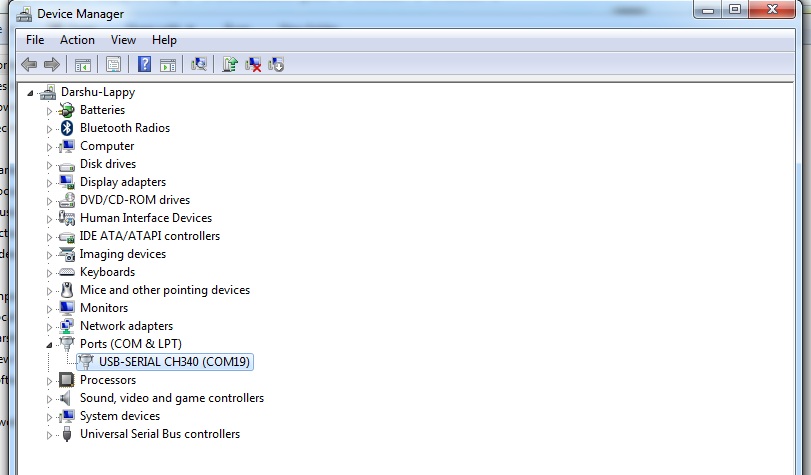

WCH have drivers from the end of 2013 on their (remarkably slow) website – download them, install them, reboot (as necessary), play with your cheap Nano.

Simply put, you need a driver for the CH340 chip installed on your computer.

Not only does it say CH340 on it, it has way fewer pins that the FTDI chip Fortunately, while my Nanos were still not working, the fix was much easier and doesn’t involve me burning myself. It seems that some of the Chinese producers have switched over to using a WCH CH340 chip instead of the FTDI chip that’s in the spec – the current theory is that licensing the chip is too expensive. The problem also didn’t present itself in quite the same way – the USB just didn’t connect rather than spitting out a pile of errors. However, when checking out my boards this morning to see what I’d actually need to solder (and having seen pictures now, it’s something I’d not even try – my hands are way too shaky), I found out that I don’t have the same USB controller. So, when my Chinese Nanos didn’t work, I assumed it was that issue, and started looking for really really fine soldering iron tips. The Gravtech produced Nanos were patched early on, but many of the clone boards used the original design, complete with error.įortunately, it’s a known issue and there’s a known solution: solder the reset pin (26) to the analogue ground pin (25) – there are a few guides to the fix online. However, the reference design had it floating, which leads to entirely random USB operation and a not particularly reliable piece of kit. The USB controller on the original Nano has a TEST pin, that should be pulled low when you’re using the chip. The original Gravitech schematic had an error in it. For example, in the UK a bare Nano (no soldered headers) will set you back about £27 from Farnell, however, the pair I picked up from eBay (with headers) set me back £2.79 each, including shipping and a USB cable. This, inevitably, led to boards being produced in China and sold around the world for stupidly small amounts of money. It is, as with all Arduinos, open source and designers Gravitech have published the schematics. The Nano is, as you may expect from the name, a tiny Arduino. However, one recent foray didn’t work quite as well as expected until this morning – Arduino Nano clones.
#Ch340 driver for mac full
So, I now have a big ‘bits’ box full of sensors and displays, which I’ve been playing with. Intellectually I knew this to be the case, but after a few searches on Amazon I discovered in a much more practical way quite how cheap they are. One of the things I’ve learned during my recent electronics tinkery, is that China produces very cheap components.


 0 kommentar(er)
0 kommentar(er)
